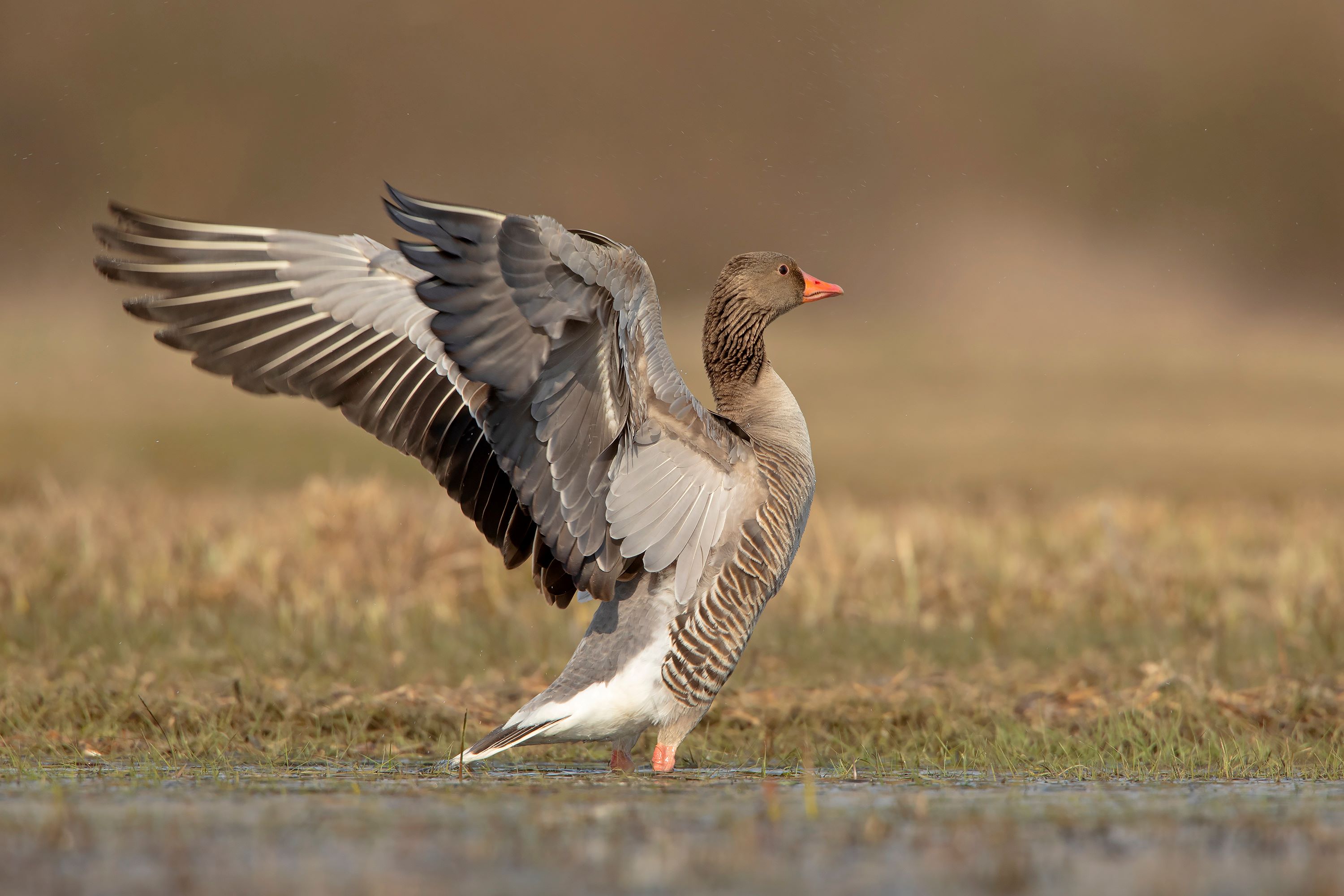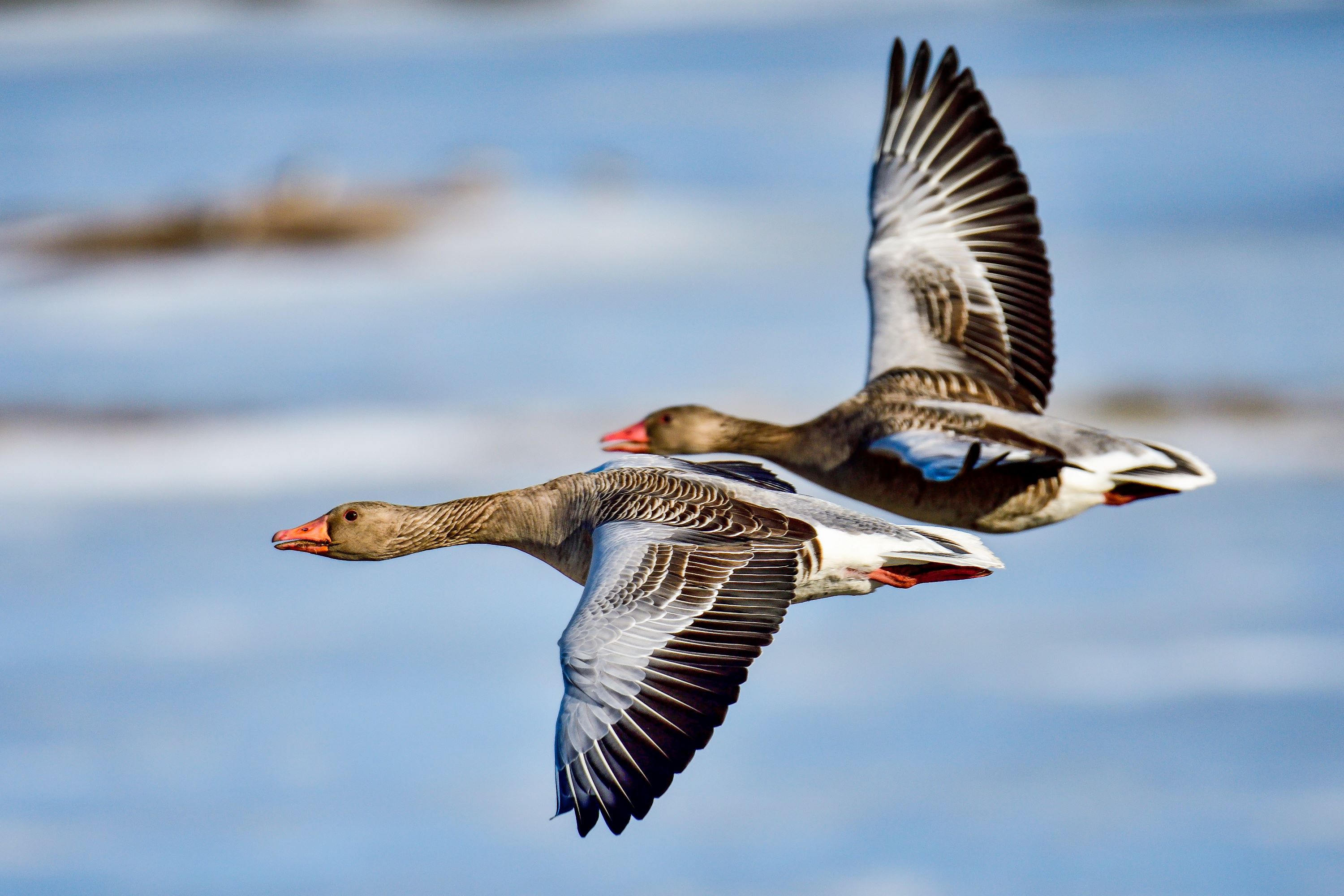
The Greylag Goose: An Emblem of Wild Fowl
Introduction
The Greylag Goose, a species steeped in history and folklore, is an intriguing bird that holds a special place in the avian world. Although not a common sight in Utah, its characteristics and behaviors make it a fascinating subject for bird enthusiasts.
Description and Identification
The Greylag Goose, or 'Anser anser', is the largest and bulkiest of the wild geese native to Europe and Asia. It is characterized by its large size, mottled grey plumage, and a prominent orange beak. The legs are pinkish-grey, and the eyes are surrounded by a ring of bare, white skin, which is a distinctive feature among geese. In flight, their slow wingbeats and a 'lagging' rear leg distinguish them from other geese species.
Habitat and Range
The Greylag Goose predominantly resides in temperate regions of Europe and western Asia. It favors wetlands, marshes, and agricultural lands, where it can easily find food and water. The bird has also adapted to various human-modified landscapes, which has helped it thrive in diverse environments.

Behavior and Social Structure
Greylag Geese are highly social birds, often seen in large flocks, especially outside the breeding season. They exhibit strong family bonds, and pairs are known to mate for life. The geese communicate through a variety of vocalizations, including loud honking, which is a familiar sound in their habitats.
Diet and Foraging
The diet of the Greylag Goose primarily consists of grasses, roots, and shoots. They are known for their 'grazing' behavior and can often be seen foraging in fields and meadows. During the winter, they may also feed on grains and other crops, leading to occasional conflicts with farmers.
Migration Patterns
The Greylag Goose displays a mix of migratory and resident behaviors. While some populations in northern Europe migrate southwards to escape the harsh winter, others, particularly in milder regions, are sedentary. Migratory flocks travel in V-shaped formations and are known for their endurance in long-distance flight.
Breeding and Nesting
Breeding typically occurs in the spring. Greylag Geese are ground nesters, with nests often located in reeds or on islands in lakes and rivers to avoid predators. The female lays 4-6 eggs, and both parents are involved in raising the goslings, which are able to walk, swim, and feed themselves shortly after hatching.
Cultural Significance
The Greylag Goose has a prominent place in human culture and history. It is believed to be the ancestor of most domestic geese breeds and features in folklore and literature, most famously as the 'silly goose' in various stories.
The Greylag Goose and Conservation
While the Greylag Goose is not currently considered at risk, it faces challenges like habitat loss and climate change. Conservation efforts focus on preserving wetlands and other natural habitats to ensure the stability of their populations.
The Greylag Goose in Utah
As the Greylag Goose is native to Europe and Asia, it is not typically found in Utah or other parts of North America. However, its domesticated descendants and other related species may be spotted, offering a glimpse into the diverse world of geese and their adaptations.
Conclusion
The Greylag Goose, with its distinctive appearance, fascinating behaviors, and historical significance, offers a unique perspective on the natural world. Understanding this species enriches our appreciation of bird ecology and emphasizes the importance of preserving diverse habitats for all wildlife. For birdwatchers and nature lovers, the story of the Greylag Goose is a reminder of the beauty and complexity of the avian kingdom.